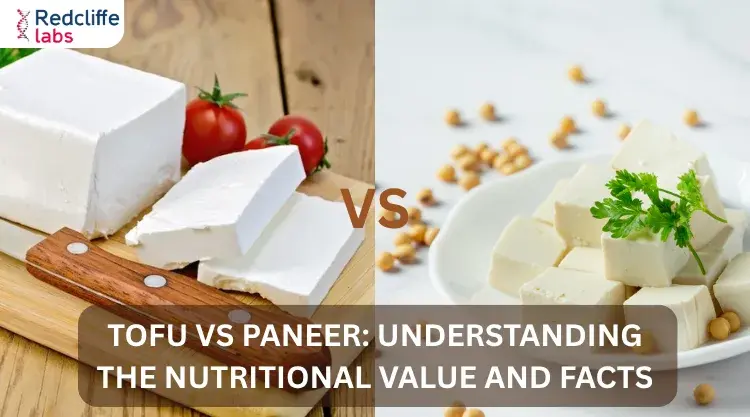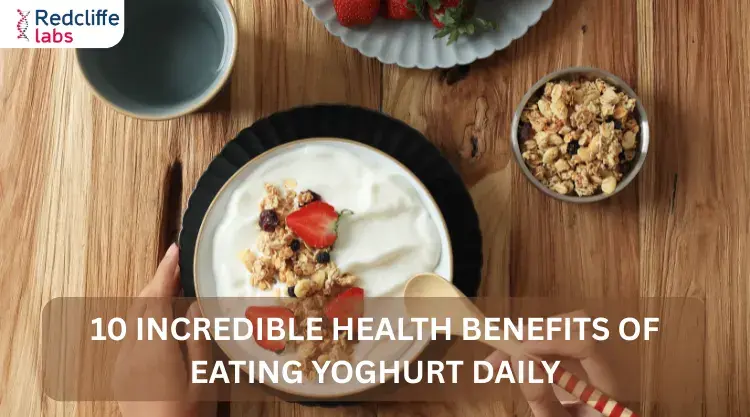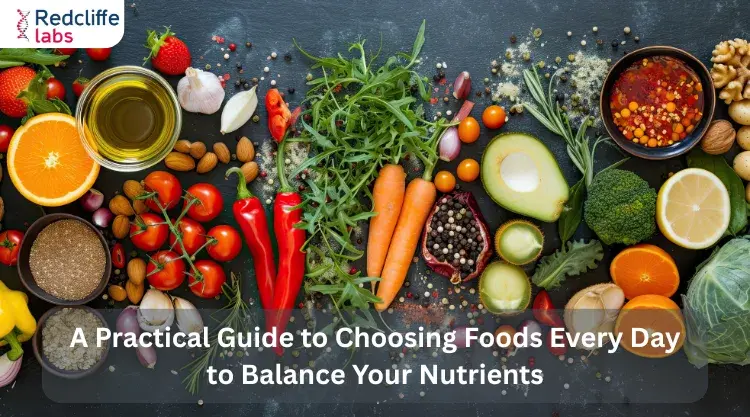List of best & easy available Indian foods which help in reversing diabetes easily

Medically Reviewed By
Dr. Ragiinii Sharma
Written By Prekshi Garg
on Nov 5, 2022
Last Edit Made By Prekshi Garg
on Feb 26, 2025

Diet plays a crucial role in the management of any disease. An adequate diet can not only help you prevent several diseases but can also help you reduce symptoms once you have been diagnosed with the disease. The same is true for diabetes as well. Diabetic patients must manage their blood sugar levels to prevent future health complications. Besides medicines, your diet plays a crucial role in lowering your blood sugar levels. There are many foods that lower blood sugar levels. With that said, now the question arises of what a diabetic patient must eat that is healthy and tasty. Here is a list of the best foods for diabetics so that choosing the right food is easy.
What can Indian food help in reversing diabetes easily?
Diet plays a vital role in managing diabetes. Various food items are easily available in India and can be included in your diet to reduce your blood sugar levels. Following is a list of foods that lower blood sugar levels.
Whole grains
It is wise for diabetic patients to replace refined flour with whole grains in their daily diet. This will help prevent the sudden rise in blood sugar levels. Whole grains like brown rice, oats, bulgur wheat, quinoa, millet, and barley can all be consumed by diabetic patients. The beta-glucans derived from the consumption of barley and oats prevent the increase of glucose levels in the blood. Whole grains are rich in fibre and nutrients that slow down the digestion process in the stomach and allow the better absorption of nutrients by the body. This also leads to slow absorption of nutrients, thereby preventing the sudden increase in blood sugar levels.
Green leafy vegetables
Green vegetables are not only packed with nutrients to provide us with energy but are also extremely low in calorie content. The lower content of carbohydrates in green vegetables prevents the sudden rise of sugar levels in your blood. The essential phytochemicals, dietary fibre, minerals, and vitamins in green leafy vegetables also considerably decrease the risk of type II diabetes.
Nuts
Occasional consumption of nuts in the form of snacks accompanied by an adequate balanced diet can improve the blood sugar levels in patients with type II diabetes. It is always recommended to have almonds after your meal. This will decrease the insulin and blood sugar levels that may rise due to your meal. Pistachios contain glucagon-like peptide 1, which also helps in reducing your risk of diabetes. Other than almonds and pistachios, walnuts are also beneficial in reducing blood sugar levels and the risk of diabetes.
Garlic
Garlic is one of the most frequently used foods in our kitchen. Its use in the food improves the food's glycemic index, thereby helping reduce fasting and postprandial (PP) blood sugar levels. Garlic is enriched in vitamin B6 and vitamin C, which are required to improve carbohydrate metabolism and maintain blood sugar levels, respectively.
Diabetes is a lifestyle and lifelong disease. Diabetic patients always need to take care of what they eat and what they should avoid. This is an extremely difficult task to choose the right food. The right food can help you reduce your sugar levels and the dosage of your diabetic medicines. Ensure that you eat wisely to prevent diabetes and its future complications.
Cinnamon
Cinnamon is another household spice that significantly reduces your risk of diabetes and its associated health complications. This is because cinnamon signals the insulin receptor, which releases insulin in your body. The antioxidant properties of cinnamon also help in the prevention of the development of diabetes. Including cinnamon in your meal will also prevent the sudden rise of sugar levels after meals.
Beans
A bowl of lentils or beans and a low glycemic index diet can help type II diabetes patients by reducing their blood sugar levels and decreasing the risk of coronary artery disease in patients. Beans keep us full for longer as they are rich in nutrients like proteins and fibre. This also lowers your carbohydrate intake by reducing your intermittent urge to eat something. The glycemic index of some of the commonly used beans, like soybean, is 15, chickpeas are 33, and kidney beans is 28.
Fatty fish
Diabetic patients can include fatty fishes that have high omega-3 fatty acids in their diet. The fatty fishes that are rich in omega-3 fatty acids are herring, salmon, and mackerel. Omega-3 fatty acids are essential as they help avoid health complications that may arise from diabetes, like retinopathy, neuropathy, cardiomyopathy, and nephropathy. Since fatty fish is also a rich source of protein, they make you feel full for a comparatively longer time, decreasing your carbohydrate intake.
Milk
Milk contains proteins and carbohydrates in the right proportion that helps control blood sugar levels. A diabetic patient can safely include two servings of milk in their daily diet. You can also include milk products like cottage cheese, buttermilk, and curd in your diet. Along with this, it is also advised that diabetic patients must take low-fat milk, as fat in milk not only adds to your daily calorie count but is also not considered good for health.
Fruits
Fruits are high in fibre, and in addition to that, they contain fructose that does not cause an immediate rise in your blood sugar levels. Thus, fruits are a good and sweet option for diabetic people that can be included in their daily diet. Here are some of the fruits that you can consume easily.
- Papaya: It is a summer fruit that can provide a lot of benefits to your health. It not only tastes well but also lowers your sugar levels. You can eat both the seeds and the pulp of the papaya. Being rich in fibre and antioxidants, they prevent cell damage. It also facilitates weight loss as it is a low-calorie fruit. Papaya is a perfect fruit for people with diabetes because it contains folate, vitamin B, magnesium, potassium, and fibre.
- Plum: Plums are one of the most diabetic-friendly fruits available. They are low in glycemic index and thus take a longer time to break down the sugars in your body. This reduces your risk of increasing blood sugar levels. The fruit is rich in nutrients that decrease insulin resistance in your body. They are also a good source of fibre which help in controlling your blood sugar levels.
- Berries: Berries that include raspberries, strawberries, blackberries, or blueberries are also excellent fruit for diabetic people. According to the US Department of Agriculture, the sugar content in strawberries and blackberries is 7 grams per cup, while raspberries contain only 5 grams of sugar per cup. Berries are also rich in nutrients like antioxidants and phytonutrients that lower glucose absorption in your body. Berries also contain fibre, vitamin C, and anti-inflammatory properties.
- Kiwi: According to the US Department of Agriculture, 6 grams of sugar is present in a fleshy kiwi. Kiwis are not only low in sugar content but are also rich in vitamin C. The glycemic index of kiwi is only 49, which indicates that kiwi takes a longer time to convert glucose in your body. It is recommended that you have kiwis in the morning as they can greatly reduce the sugar uptake in your blood because of the high fibre content that provides it with a higher water-holding capacity. This means that the consumption of kiwi absorbs water and thickens into a gel, thus slowing down the rate at which the sugar is converted.
- Cherries: One cup of cherries contains around 52 calories, that is, approximately 12.5 grams of carbohydrates. Cherries efficiently fight inflammation. Cherries are rich in antioxidants that help in the treatment of heart disease, cancer, and other diseases as well. Cherries can be consumed in any form, that is, fresh, canned, frozen, or even dried but be sure that whatever form of cherry you eat does not have any added sugar.
- Peaches: Peaches contain around 59 calories, 10 mg of vitamin C,14 gm carbohydrates, and 285 mg of potassium, as per USDA. Several forms of peaches are available for consumption, like flavoured iced tea, smoothies, or raw fruit. Peaches contain carbohydrates, but their complete nutritional profile compensates for the carbohydrate content. Peaches also help fight cardiovascular problems and obesity, which are health complications that may arise due to diabetes. This is because of its high content of bioactive compounds. Peaches are also rich in potassium, fibre, and vitamins A and C.
- Apples: This is no hidden truth that apples are one of the most healthy fruits available. Apples should be a part of everyone’s diet as they help fight several symptoms and diseases. Apples contain vitamin C, soluble fibres, along with other nutrients. The carbohydrate content in apples is stabilised by the fibre content and antioxidant properties, which helps maintain your blood sugar levels.
- Oranges: Orange is an extremely beneficial fruit for diabetic people as it satisfies your sweet tooth without adding any extra calories and sugar to your diet. Oranges contain approximately 12 grams of sugar per fruit, less than 70 calories, and high vitamin C levels. The high fibre content of oranges takes time to break down into sugar. Oranges must be consumed in raw form rather than as juice.
- Pears: The high fibre content of around 5.5 gm in pears makes them a wise choice for diabetic people. Pears are rich in iron, calcium, magnesium, minerals, vitamin C, potassium, folate, lutein, choline, beta-carotene, and retinol. The skin of pears is high in fibre, reducing your risk of developing obesity and cholesterol.
- Apricots: Apricots are another alternative to your sweet cravings. It is a sweet summer fruit with only 3 grams of fibre, 17 calories, and 4 grams of carbohydrates. Apricots also contain healthy fats with a glycemic index of 32 and a glycemic load of 9, indicating that apricots take longer to convert to sugar in your body. Along with being high in vitamins A and E, apricots also provide you with one-fourth of your daily copper requirement.
Olive oil
Olive oil contains good fat that, instead of increasing blood sugar levels, actually helps reverse diabetes. Olive oil also slows down digestion, thereby preventing glucose spikes after meals.
Takeaway
Sugar, glycemic index, and carbohydrate content are important parameters that must be looked at before adding anything to the diet of a diabetic patient. This is because these are highly linked with the blood sugar levels in your body. Green leafy vegetables, beans, fruits, milk and milk products, olive oil, whole grains, fatty fish, cinnamon, and garlic are wise choices for diabetic patients. These will not only add flavour to your diet and ensure that your blood sugar levels are maintained within the optimum range. Now that you have the diabetic diet food list, make sure to add them to your daily diet.
Frequently Asked Questions (FAQs)
-
What food should diabetic patients avoid?
Certain foods that can cause further increase in the blood sugar levels of diabetic people are sugar and its variants, deep-fried food, refined and processed food, canned food, and packaged snacks.
-
Is idli good for diabetic people?
Idli can be a wise choice for diabetic people as it is free from cholesterol and saturated fat.
-
Is paneer good for diabetic people?
Yes, since paneer is a rich source of protein, it ensures that sugar is released into your body gradually, thereby preventing sugar spikes.
Leave a comment
1 Comments
ashvi
Nov 7, 2022 at 5:21 PM.
Can I eat papaya with diabetes



